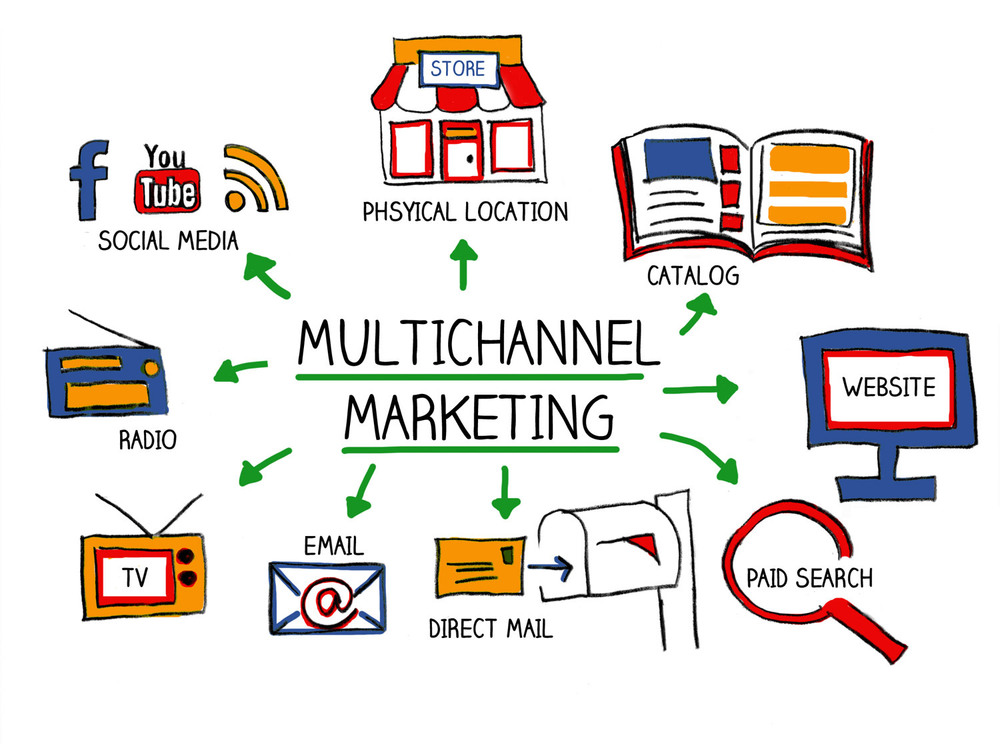 Today we have many platforms to promote our business. During old times, radio was the only medium for marketing campaigns. Later television became a dominant platform. But this changed with the advent of the Internet. It sowed seeds to a multi-channel approach which later became a major tool for businesses for marketing campaigns. It is an approach where businesses use multiple channels to interact with customers to sell their products and services. The channel can be direct and indirect; emails, TV ads, Phone calls, bus ads, billboards, Facebook ads, Google Adwords, Twitter, Websites etc. Marketers contact the customers multiple times using multiple mediums. The repetition is important in order to register the company’s name and their products in the customer’s mind. Only then will they think of your product when the need arises.
Today we have many platforms to promote our business. During old times, radio was the only medium for marketing campaigns. Later television became a dominant platform. But this changed with the advent of the Internet. It sowed seeds to a multi-channel approach which later became a major tool for businesses for marketing campaigns. It is an approach where businesses use multiple channels to interact with customers to sell their products and services. The channel can be direct and indirect; emails, TV ads, Phone calls, bus ads, billboards, Facebook ads, Google Adwords, Twitter, Websites etc. Marketers contact the customers multiple times using multiple mediums. The repetition is important in order to register the company’s name and their products in the customer’s mind. Only then will they think of your product when the need arises.
Multi-Channel Approach Challenges
It can be a challenge to track customer behaviour. To track the customer, Twitter and Facebook have analytics. But these data do not integrate easily. So to overcome this companies must build a robust tracking systems. If you have Google analytics, you will get information regarding the channel, customers use to get into your website. With this, companies can modify their multi channel approach. For example, if no customers access your website via a particular channel, then you can divert the resources to another channel.
There are different patterns of buying. These patterns can be analysed and guessed. For example, during World cup season there will be a high demand for jerseys. A t-shirt manufacturer must recognise this time and give offers and discounts to entice customers. Such foresights on human behaviour will help you channel customers effectively.
Time and money for channels
Without knowing which channel has the best performance it is difficult to know where to spend the resources like time and money. We always have the temptation to spend more money and time on best performance resources. But this may not increase the number of customers via that particular channel. It is an art to find the best channel.
Some customers visit your website through different or unique channels. And it is hard to know which channel convinced them. So the companies need to keep experimenting with different channels.
Coordinating multi-channel is no cakewalk. For example, if a customer clicks on an ad displayed in a channel and reaches your main webpage and not your product page. This situation is bad because there is a possibility that the customer closes your website thinking it’s not worth searching. So the landing page is important for each ad.
New Marketing Approach: The Omni Approach
In Omni-channel approach is a multi-channel approach where the companies provide the customers with a smooth shopping experience. The Omnichannel marketing strategies are:
Smartphone Channel:If the customer decides to buy something online via smartphone and they are not ready to buy the item at that time. So they put their product in the cart
Email Channel: The customer forgets about the product but it is still in the cart.
Desktop channel: The customer decides to buy the product via desktop. But sometimes they put it in cart.
In all these cases the product was safe in the cart. No matter what channel the customer used, the cart was with them until they purchased the product. This integration level may look difficult but CRM software solutions can integrate different channels and these provide a seamless experience to customers. This is an effective marketing strategy.
Conclusion
The multichannel marketing approach basically works with guesswork and data integration. Mere integration is not the point. We need to identify the customer behaviour and the signals provided by various channels. If you spend more hours calculating and analysing the data and do various strategies for different companies you can identify the faults and benefits easily.
 Today we have many platforms to promote our business. During old times, radio was the only medium for marketing campaigns. Later television became a dominant platform. But this changed with the advent of the Internet. It sowed seeds to a multi-channel approach which later became a major tool for businesses for marketing campaigns. It is an approach where businesses use multiple channels to interact with customers to sell their products and services. The channel can be direct and indirect; emails, TV ads, Phone calls, bus ads, billboards, Facebook ads, Google Adwords, Twitter, Websites etc. Marketers contact the customers multiple times using multiple mediums. The repetition is important in order to register the company’s name and their products in the customer’s mind. Only then will they think of your product when the need arises.
Today we have many platforms to promote our business. During old times, radio was the only medium for marketing campaigns. Later television became a dominant platform. But this changed with the advent of the Internet. It sowed seeds to a multi-channel approach which later became a major tool for businesses for marketing campaigns. It is an approach where businesses use multiple channels to interact with customers to sell their products and services. The channel can be direct and indirect; emails, TV ads, Phone calls, bus ads, billboards, Facebook ads, Google Adwords, Twitter, Websites etc. Marketers contact the customers multiple times using multiple mediums. The repetition is important in order to register the company’s name and their products in the customer’s mind. Only then will they think of your product when the need arises.




